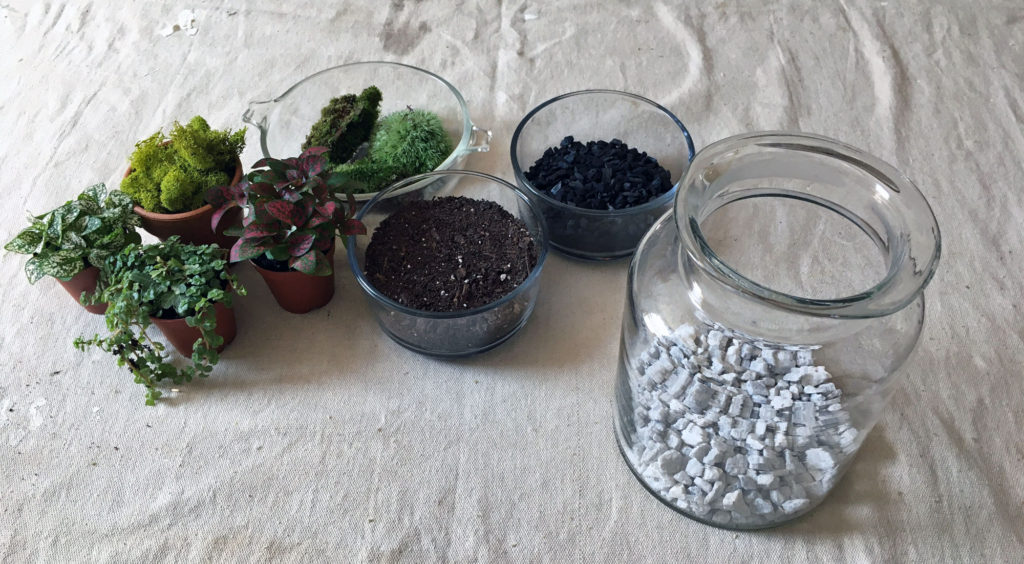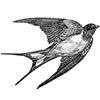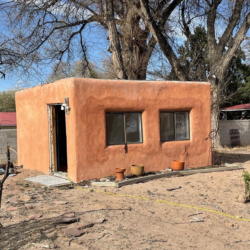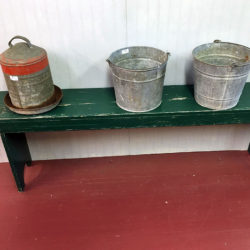Making Terrariums with Thrift Store Finds

Lately it seems terrariums are making a comeback. Terrariums are portable little gardens, small natural worlds, perfect for renters or people who like plants but don’t really want to garden or don’t have the space for a lot of plants. They are surprisingly easy and affordable to make. You can find information or kits for getting started on the web, in books and magazines. Or for a quick-start guide follow my easy step-by-step instructions below.
Gather Supplies

Supplies can be found at a garden center or in the garden section of many discount stores. Start with the container. Thrift stores provide endless options for terrarium containers. The glass and house-ware departments are very affordable. Once you start you may get hooked and every container becomes a possible terrarium!

Supply List:
• Container
• Base layer – some type of drainage provided by pebbles, shells, sand, etc.
• Charcoal – Horticultural type, activated (stops mildew)
• Soil – potting soil or sand depending on the type of plants
• Plants
• Decorative item(s) – *optional

Once you decide on the size and type of your terrarium you can select the plants. Forest type terrariums often use ferns, moss, lichen, ivy and African violets, but feel free try what you like. Plants can be changed, don’t feel like you did something wrong if the moss fades or a plant reaches its last days.
The beauty of a terrarium is it’s your little garden experiment. So enjoy it and play around – it will be fun to see the results.

Now the fun begins! Start out by adding the base layer of gravel or whatever you’ve decided to use. The example here uses marble chips from the hardware store. You can use seashells or glass pebbles for a more decorative touch.


Add a thin layer of charcoal to help the terrarium stay fresh and fight mildew.Next add the layer of soil. The depth of the soil will depend on the type and size of plants you are using. Create hills and valleys with the soil to add visual interest and different levels for the plants.

For easy planting keep the plants in their pots and insert into the soil. You can hide the edge of the pot with moss. Or if you have enough space dig a little hole in the soil and add your plants directly.

Next add some moss, lichen or ground cover type plants. Moss and small plants can be gathered from the woods or your yard but be sure to only take what you need. Every state is different, check out the rules for gathering and the endangered plant list for where you live. If you’re worried about bringing any critters into your home buy moss and plants from a local garden center or online.

Add a focal point or fun accent piece. These small items can also be found in thrift stores. Look in the kids toy department for small dinosaurs, tiny dolls or even games pieces. Small figures from HO train sets help create little landscape scenes inside a terrarium.

Tips for terrarium care:
Closed container terrariums should never be in direct sunlight and need very little water. If you see a lot of condensation on the inside walls open the lid slightly for a few hours to allow air flow. If the plants start to look dry and the moss is yellowing open the lid and mist with a spray bottle.
Open container terrariums may need a bit more water, depending on the type of plants used. A small amount of water and mist from a spray bottle every other week or so should be enough. Plants may need to be trimmed or even exchanged if they out grow the container.
Resources:
The New Terrarium by Tovah Martin (book)
Terrarium Craft: Create 50 Magical, Miniature Worlds by Amy Bryant Aiello (book)
The Fern & Mossery (site)
Terrarium: 33 Glass Gardens to Make Your Own by Anna Bauer (book)
Terrain – offers kits, supplies and pre-made terrariums for purchase





One comment on “Making Terrariums with Thrift Store Finds”
Comments are closed.